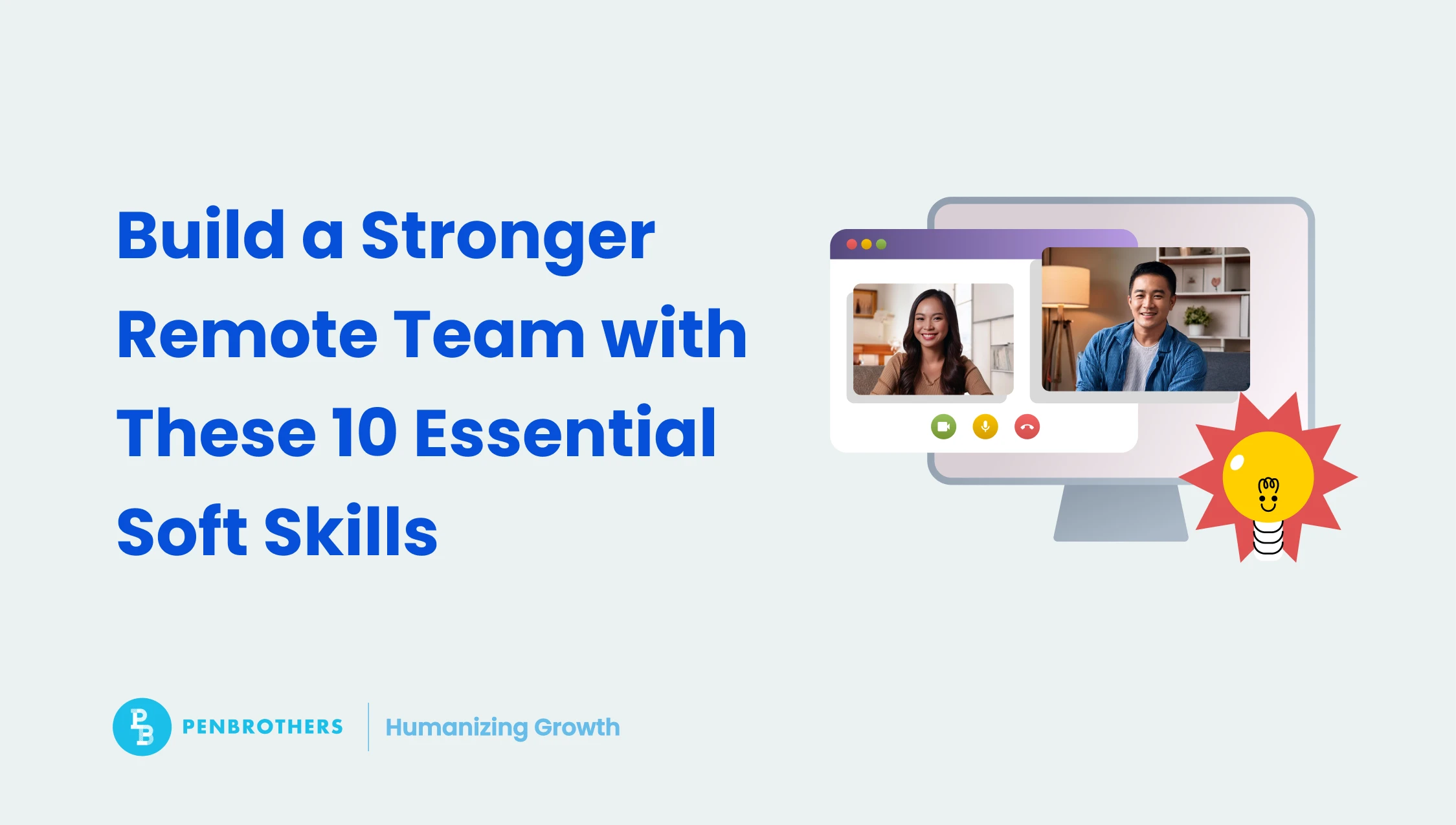What's Inside?
What Is a PIP and How to Use It for Remote Employee Performance

It starts like this: you’ve had three feedback sessions. You’ve documented the slip-ups. You’ve offered tools, coaching, and nudges. Still, something isn’t clicking. The remote team member isn’t improving, and you’re out of ideas.
This is when most managers either wait too long or act too quickly.
Enter the PIP. The Performance Improvement Plan. Misunderstood. Misused. Sometimes feared. But when done right? It’s one of the most effective tools for accountability, clarity, and fairness especially in remote teams.
Key Takeaways
- A Structured Recovery Tool, Not Just a Path to Termination: A Performance Improvement Plan (PIP) is a formal tool designed to give an underperforming employee a clear, structured, and fair opportunity to improve. It should be approached as a final attempt at recovery, not just as a procedural step before termination.
- A PIP Should Never Be a Surprise: A PIP is not the first step in addressing performance issues; it is the last. It should only be implemented after informal coaching, direct feedback, and clear, documented warnings have already been given. An employee should never be caught off guard by a formal PIP.
- Success Depends on a Clear and Fair Structure: An effective PIP is built on clarity. It must identify performance gaps with specific, evidence-based examples, set achievable SMART goals, explicitly outline the support the company will provide, and include a schedule of regular check-in meetings to monitor progress.
- Especially Critical for Managing Remote Teams: The formal structure and documentation of a PIP are even more important in a remote or offshore setting. In an environment where informal feedback is less common and context can be easily lost, a PIP provides the necessary clarity, accountability, and legal protection for both the employee and the employer.
What Is a PIP, Really?
A Performance Improvement Plan (PIP) is a structured, formal document designed to help employees who are underperforming get back on track. It outlines what’s going wrong, what needs to change, what support will be provided, and how long the employee has to turn things around usually within 30 to 90 days.
It’s not a fast track to termination.
Think of it as a reset mechanism, not a disciplinary tool. A well-crafted PIP gives both the manager and the employee a shared blueprint for progress. For more details on how to approach this process effectively, read our full guide on Performance Improvement Plans.
At its core, a good PIP answers four critical questions:
- What’s not working? (With specific, observable examples)
- What does better look like? (Defined by measurable goals)
- What support is being offered? (Mentorship, tools, training, etc.)
- How will progress be reviewed? (Check-ins, milestones, and outcomes)
Done right, a PIP is both a compass and a contract. It gives employees a fair shot at course-correcting while giving companies the documentation to act responsibly especially important in remote setups where context is harder to see.
Why a PIP Matters (And What Happens If You Don’t Have One)
Skip the PIP, and you’re not just skipping a document. You’re skipping structure, accountability, and fairness. You’re leaving both your employee and your company exposed.
Here’s what often happens when there’s no PIP in place:
- Legal exposure: Without a paper trail, terminations can quickly escalate into legal and reputational risks. A well-documented PIP demonstrates that the company gave the employee a fair chance to improve before taking further action. Still not sure when or how to implement one? Use our Performance Evaluation Template to get started with clear criteria and documentation practices.
- Manager fatigue: Repeating feedback without resolution drains morale. It also erodes a manager’s credibility across the team.
- Employee confusion: Inconsistent or informal feedback feels personal, not professional. Without clear goals and timelines, underperformers are left guessing what “better” actually means.
- Cultural erosion: When underperformance goes unaddressed, the message is loud and clear: standards don’t really matter here.
These problems are multiplied in remote and offshore settings like those managed through Penbrothers where feedback delays, tone misinterpretation, and cultural differences already challenge communication. A strong PIP cuts through that noise. It anchors expectations and timelines in writing, not in assumptions or Slack threads.
According to Gallup, only 2 in 10 employees strongly agree that their performance is managed in a way that motivates them to do outstanding work. That’s a staggering gap in how companies are managing talent. PIPs help close that gap, not with harsher policies, but with structured clarity and follow-through.
A PIP isn’t just a document. It’s a commitment to transparency, to performance, and to giving people a real shot at success.
When to Use a PIP (And When Not To)
Not every performance issue calls for a formal plan. Misuse the PIP, and you risk turning a coaching opportunity into a compliance headache or worse, damaging trust with a high-potential employee.
So when should you use a PIP?
Use a PIP after you’ve already tried the fundamentals of good management:
- Delivered candid, direct feedback
Make sure the employee knows their performance isn’t meeting expectations, no hints, no sugarcoating. If they’re surprised by the PIP, the conversation came too late. - Set clear expectations
Before jumping into formal documentation, ask yourself: have you been specific about what “good” looks like? Vague terms like “be more proactive” or “show ownership” don’t count unless they’re tied to clear behaviors. - Offered support or coaching
A PIP isn’t the first step. It’s what happens after informal efforts like mentoring, performance reviews, or workload adjustments haven’t worked.
In other words, use a PIP when performance issues are consistent, documented, and unresolved despite your best coaching efforts.
On the flip side, don’t use a PIP when:
- You’re frustrated and want to “send a message”
A PIP is not a disciplinary slap on the wrist. It’s a structured tool for improvement. If you use it to vent, it won’t work and it won’t hold up legally or ethically. - It’s a first-time mistake or short-term dip
Everyone has off-weeks. A missed deadline or botched project isn’t cause for a formal plan unless it’s part of a larger pattern. - The issue is behavioral or misconduct-based
If there’s a violation of trust, values, or workplace safety, you may need to escalate directly to HR or legal. Don’t try to “coach” your way through something that requires disciplinary action. - You’ve already decided to terminate
If you’ve made up your mind, using a PIP as a paper trail for firing without sincere intent to help the employee improve is not only unethical, it’s risky. Courts and compliance regulators can spot it a mile away.
How to Create a PIP That’s Clear and Fair
A well-designed Performance Improvement Plan should do two things: give the employee a realistic chance to improve, and protect the business with a clear record of expectations and outcomes. Here’s how to structure it.
1. Identify the issue with evidence
Start by clearly defining what’s not working using objective, observable facts. Vague criticisms like “you’re not taking ownership” or “your attitude is off” can feel personal and unhelpful. Instead, root your feedback in specific performance indicators or missed deliverables.
Example:
Instead of “poor communication,” try:
“Did not respond to client escalation emails within the 24-hour SLA three times in April, resulting in delays in issue resolution.”
In a remote setup, especially, documentation matters. Use work logs, missed KPIs, and project timelines to ground the conversation in facts, not feelings.
2. Set SMART goals
The PIP should lay out exactly what improvement looks like. Use the SMART framework:
- Specific: What task or behavior must change?
- Measurable: How will success be tracked?
- Achievable: Is the goal realistic within their role and timeframe?
- Relevant: Does it align with the company’s needs and their job scope?
- Time-bound: By when should results be visible?
Example:
“Achieve 90%+ on-time ticket resolution rate for customer inquiries over the next 45 days.”
Avoid fluff goals like “be more engaged” or “show leadership.” These are subjective and impossible to measure fairly.
3. List available support
A PIP isn’t a solo mission, it’s a guided process. Document the specific resources the employee can lean on to meet their goals.
This might include:
- Bi-weekly 1:1 coaching sessions
- Access to new tools or software
- Structured peer mentoring
- Training sessions (internal or external)
- Written SOPs, onboarding decks, or documentation
And for remote workers, don’t forget time zone sensitivity and availability. Offering support that’s inaccessible or misaligned with their schedule defeats the purpose.
4. Define the timeline
Most PIPs run for 30, 60, or 90 days, depending on the complexity of the role and the nature of the performance issue.
- 30 days: Suitable for tactical goals (e.g., missed deadlines, attendance issues)
- 60 days: Best for behavioral improvement (e.g., communication, collaboration)
- 90 days: Use for complex roles or when the performance gap involves skill development or system mastery
Make the timeline long enough to show measurable change, but short enough to create urgency.
5. Outline milestone check-ins
The worst PIPs are the ones no one follows up on. Don’t let that happen. Set fixed check-in points throughout the plan, at least biweekly, where you and the employee can assess progress, course-correct, or troubleshoot roadblocks.
Use these sessions to:
- Review performance against goals
- Offer real-time feedback and coaching
- Adjust support strategies if needed
- Reinforce accountability
In remote setups, these check-ins are also crucial for keeping the employee engaged and emotionally supported, not just evaluated.
6. Clarify outcomes
Be transparent about what happens at the end of the PIP. There are usually three possible paths:
- Improvement: The employee meets or exceeds goals. Remove them from the PIP and consider rewarding the turnaround with new responsibilities or recognition.
- Partial improvement: There’s progress, but not enough. You may extend the PIP or reassign them to a role better aligned with their skills.
- No improvement: If goals are unmet, and the performance issues persist, the plan should lead to role termination or contract conclusion with documentation to back the decision.
Whatever the outcome, it must be clearly spelled out at the beginning of the PIP, not introduced as a surprise at the end.
Use the SMART framework and structure progress with check-ins. Not sure how to evaluate fairly and constructively? These self-evaluation examples offer inspiration on how to encourage honest reflection and accountability from both sides.
Common PIP Mistakes (And How to Avoid Them)
Even with good intentions, poorly executed Performance Improvement Plans can do more harm than good. A PIP is a leadership tool, not a legal formality or a scare tactic. Here are the most common pitfalls managers make, and how to avoid them:
1. Vague language
If your expectations aren’t specific, your outcomes won’t be either. Phrases like “show more initiative” or “be a better communicator” are open to interpretation and often to failure.
What to do instead:
Replace ambiguity with actionable, observable criteria. For example:
✅ “Respond to client emails within 24 hours.”
❌ “Improve responsiveness.”
2. No follow-up
A PIP without check-ins is a dead document. Employees won’t magically improve in isolation. Without ongoing feedback, you’re setting them up to fail and signaling that you’re not really invested in their success.
What to do instead:
Set calendar reminders for milestone check-ins (weekly or biweekly). Use those sessions to discuss wins, clarify roadblocks, and course-correct if necessary.
3. Punitive tone
If the PIP feels like a punishment, employees will become defensive. They’ll withdraw, not engage. A PIP should feel like a structured opportunity to succeed, not a formal countdown to termination.
What to do instead:
Use a neutral, professional tone. Emphasize shared ownership: “Here’s what we’re aiming to improve, and here’s how I’ll support you.”
4. Ignoring context
Not all performance issues are skill-based. Sometimes, the root cause is burnout, mental health, team conflict, unclear processes, or even poor management. If you don’t investigate what’s driving the dip, your solution may miss the mark.
What to do instead:
Approach the PIP conversation with curiosity, not judgment. Ask open questions. “What’s been getting in the way?” “What support would help you improve?” It’s not just about output, it’s about what’s blocking it.
5. Treating the PIP as a formality
A PIP isn’t just a checkbox for HR or a legal CYA move. When managers approach it that way, employees notice and disengage. Worse, if it becomes obvious the plan was never intended to help, it can destroy trust company-wide.
What to do instead:
Be sincere. If improvement is truly on the table, act like it. And if it’s not, don’t pretend. Transparency is more respectful than false hope.
In the SHRM Global Culture Research Report 2022, it’s noted that 54% of workers who are actively looking for a new job believe their supervisor doesn’t know how to lead a team. That’s why performance conversations often spiral because they’re treated as compliance events, not leadership moments.
At Penbrothers, we train client managers to treat PIPs as collaborative, not combative. That mindset shift, from “discipline” to “development”, makes all the difference. It builds trust. It keeps talent. And in many cases, it turns things around.
What Happens After the PIP Ends?
The conclusion of a Performance Improvement Plan (PIP) doesn’t mark the end of the performance conversation, it’s actually a pivotal moment that determines the employee’s future path within the organization. There are two likely outcomes:
1. The Employee Meets the Goals
If the employee successfully meets or exceeds the improvement targets:
- Acknowledge the effort. Public or private recognition reinforces the positive behavior and motivates continued performance.
- Remove the PIP. Make it clear that the employee is no longer under a formal improvement plan.
- Reinforce expectations. Clearly define what “sustained good performance” looks like going forward.
- Explore growth opportunities. If appropriate, consider new responsibilities, a role expansion, or career development steps to keep engagement high.
Outcome: The PIP becomes a turning point, transforming a performance gap into a growth story.
2. The Employee Falls Short
If the employee does not meet the agreed-upon goals:
- Review the facts. Was the plan realistic? Were the resources and support adequate? Was there consistent effort?
- Decide the next step. This could include:
- Extending the PIP for a short period (only if progress was made but not enough).
- A role reassignment that better matches the employee’s strengths.
- Separation, if the performance gap remains wide and unaddressed.
In any case, ensure that all documentation is complete and that decisions are legally compliant and ethically sound.
Across Both Outcomes: Prioritize Communication
Regardless of the result, the tone and transparency of your communication matter deeply. Employees are more likely to accept outcomes, positive or not, when they feel:
- Heard
- Respected
- Informed
According to a McKinsey report, employees who feel fairly treated are 4.6 times more likely to deliver high performance. When executed with structure and empathy, PIPs can foster this sense of fairness and psychological safety, both essential for long-term organizational health.
Final Thoughts
Too often, managers view PIPs as bureaucracy. Or a shortcut to termination. But for remote teams especially, the PIP is a leadership tool. Used well, it builds clarity. Restores trust. Saves potential. And yes, it protects the company.
Penbrothers supports clients in not just hiring offshore talent, but managing them well. That includes walking you through how to structure PIPs, host check-ins, and navigate what comes next.
Because if your remote team is going to thrive, it starts with performance. And performance starts with clarity.
Frequently Asked Questions
A PIP is a formal, structured document that outlines the specific performance issues an employee is facing. It sets clear, measurable goals for improvement, defines a specific timeline (typically 30, 60, or 90 days), and details the support and resources the company will provide to help the employee succeed.
Not necessarily, but it is a final and serious step. A well-designed PIP is intended to provide a genuine opportunity for an employee to correct their performance and return to good standing. However, if the goals of the plan are not met within the specified timeline, it typically does lead to termination.
A PIP should be used only after informal coaching and multiple rounds of direct, documented feedback have already failed to resolve a consistent performance issue. It should never be used as a response to a first-time mistake or as a surprise to an employee who has not received prior warnings.
A fair PIP must include:
• Specific, evidence-based examples of the performance gaps, not vague criticisms.
• SMART (Specific, Measurable, Achievable, Relevant, Time-bound) goals for improvement.
• A clear list of the support and resources the company will provide.
• A defined timeline and a schedule for regular check-in meetings.
• A clear statement of the possible outcomes at the conclusion of the plan.
No. A PIP is designed to address performance-related issues (such as missed deadlines or poor quality of work). Issues of misconduct, such as violations of company policy, harassment, or safety rules, should be escalated directly to HR or legal for disciplinary action, not handled through a performance improvement plan.
*This article was crafted with the support of AI technology and refined by a human editor.





